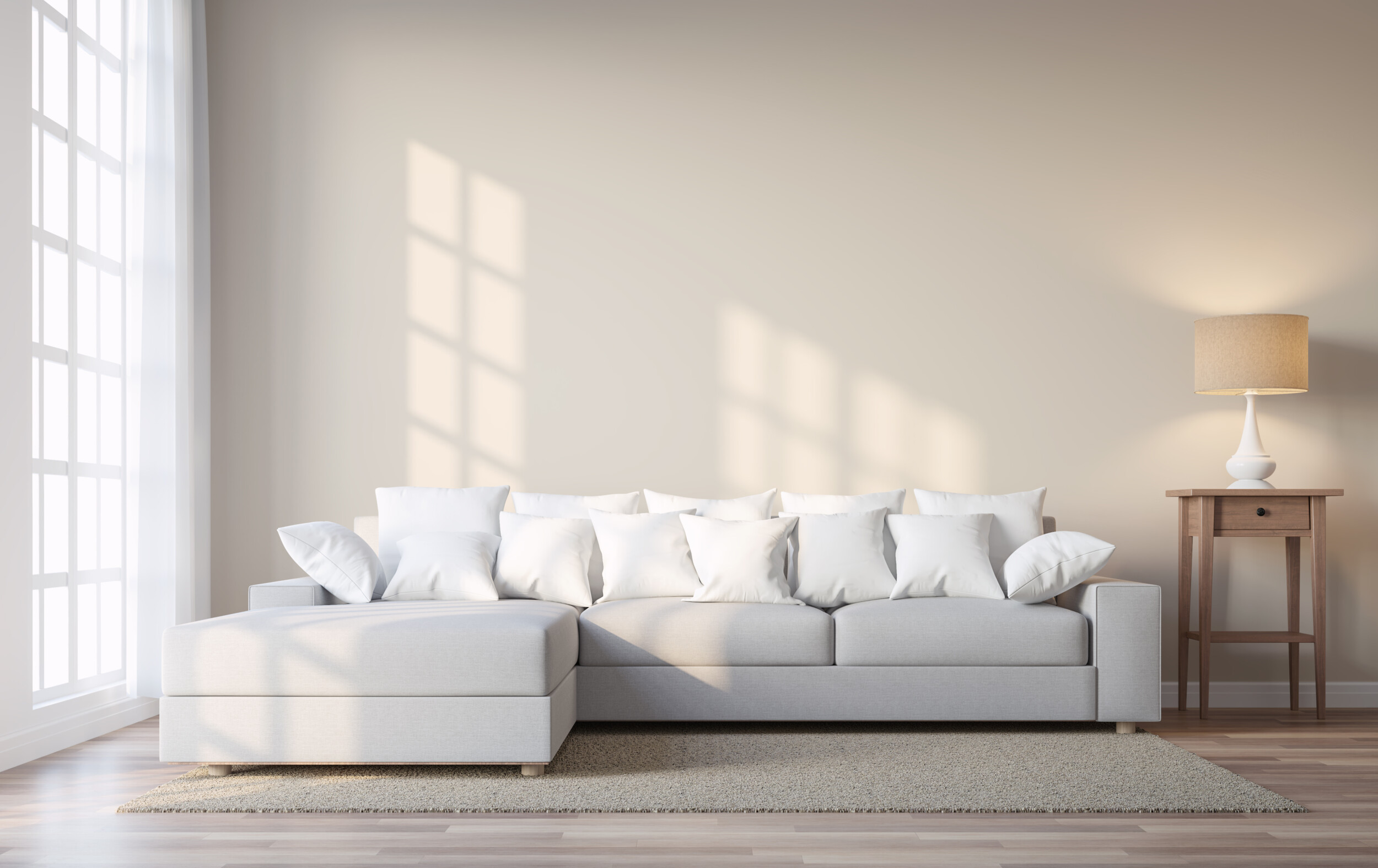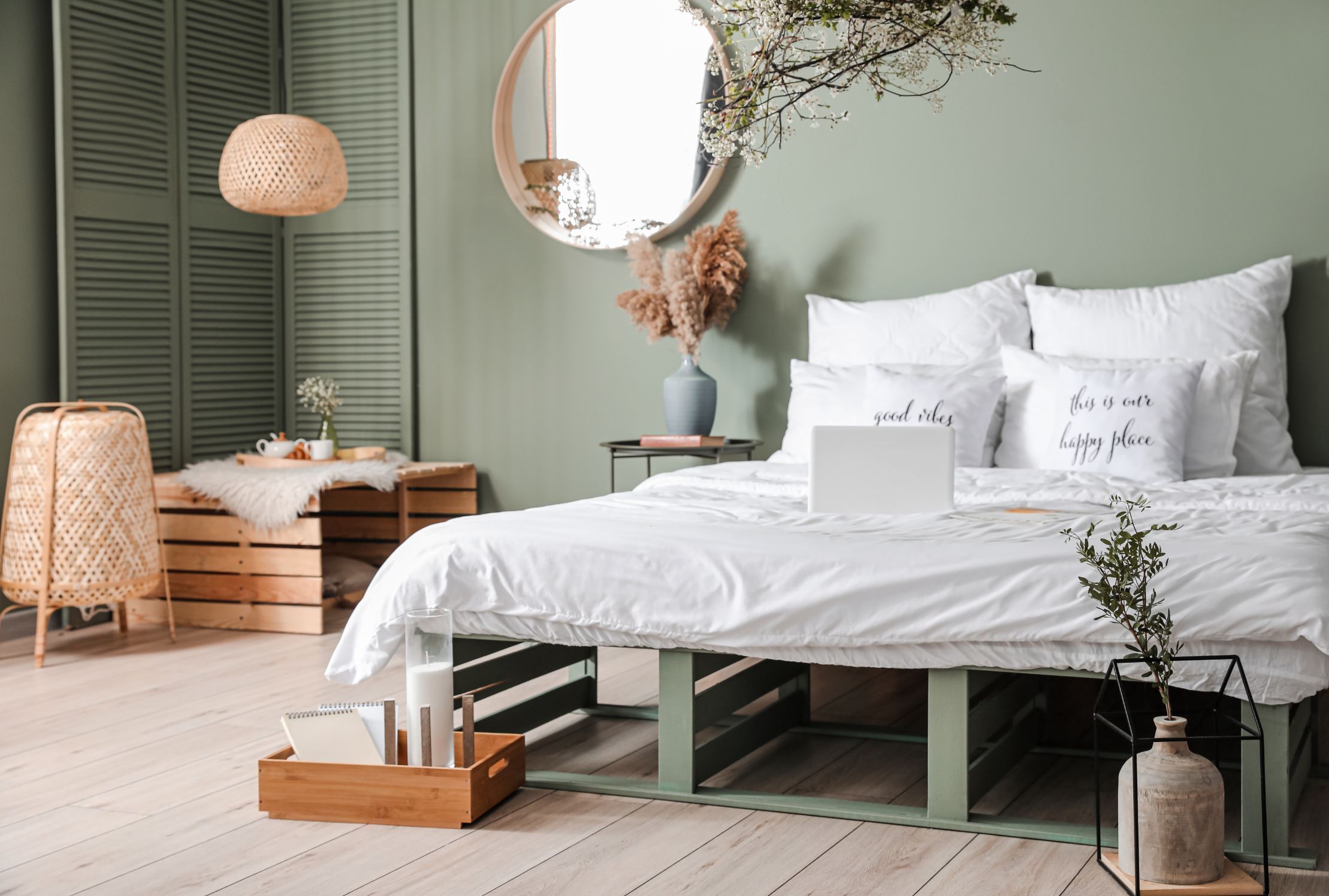Choosing the Right Paint Finish: Best Cream Paint For Bedroom

Picking the right paint finish for your bedroom is crucial for achieving the desired look and feel. The finish affects the overall appearance, durability, and washability of the paint.
Paint Finishes and Their Properties, Best cream paint for bedroom
Different paint finishes have varying levels of sheen, which impacts their durability, washability, and light reflection. Here’s a breakdown of the most common paint finishes and their characteristics:
| Finish | Durability | Washability | Light Reflection |
|---|---|---|---|
| Matte | Low | Low | Minimal |
| Eggshell | Medium | Medium | Slight |
| Satin | High | High | Moderate |
| Semi-Gloss | Very High | Very High | High |
Choosing the Right Finish for Different Bedroom Areas
The best paint finish for your bedroom depends on the area you’re painting.
- Walls: Matte or eggshell finishes are ideal for walls as they hide imperfections and create a soft, cozy feel. Matte finishes are best for bedrooms with minimal traffic, while eggshell finishes offer a bit more durability and are easier to clean.
- Trim: Satin or semi-gloss finishes are recommended for trim, doors, and windows. These finishes are more durable and washable, making them ideal for high-traffic areas. They also reflect more light, making them appear brighter and cleaner.
- Ceilings: Matte or eggshell finishes are best for ceilings. They create a clean, seamless look and minimize any imperfections.
Top Cream Paint Colors for Bedrooms

Cream paint colors are a popular choice for bedrooms because they create a sense of calm and serenity. They are also very versatile and can be paired with a wide range of furniture and decor styles.
Cream paint colors can be divided into two categories: warm creams and cool creams. Warm creams have yellow or orange undertones, while cool creams have blue or gray undertones. The undertones of a cream paint color will affect the overall feel of the room. Warm creams can make a room feel cozy and inviting, while cool creams can make a room feel more spacious and airy.
Warm Cream Paint Colors
Warm cream paint colors are perfect for creating a cozy and inviting bedroom. They can also make a small bedroom feel larger and brighter. Some popular warm cream paint colors include:
- Benjamin Moore’s Chantilly Lace: This classic cream paint color has a slight yellow undertone that makes it feel warm and inviting. It’s a great choice for bedrooms with a traditional or farmhouse style.
- Sherwin-Williams’ Creamy: This warm cream paint color has a slight orange undertone that gives it a touch of warmth. It’s a great choice for bedrooms with a modern or contemporary style.
- Valspar’s Warm Beige: This warm cream paint color has a subtle yellow undertone that makes it feel warm and inviting. It’s a great choice for bedrooms with a transitional or eclectic style.
Cool Cream Paint Colors
Cool cream paint colors are perfect for creating a serene and relaxing bedroom. They can also make a large bedroom feel more intimate and cozy. Some popular cool cream paint colors include:
- Benjamin Moore’s White Dove: This cool cream paint color has a slight gray undertone that makes it feel calm and serene. It’s a great choice for bedrooms with a minimalist or Scandinavian style.
- Sherwin-Williams’ Accessible Beige: This cool cream paint color has a slight blue undertone that gives it a touch of coolness. It’s a great choice for bedrooms with a modern or contemporary style.
- Valspar’s Creamy White: This cool cream paint color has a subtle gray undertone that makes it feel calm and serene. It’s a great choice for bedrooms with a traditional or farmhouse style.
Creating a Mood Board
A mood board is a great way to visualize how different cream paint colors will look in your bedroom. You can create a mood board using paint swatches, fabric samples, and images of furniture and decor.
For example, a mood board for a bedroom painted in Benjamin Moore’s Chantilly Lace might include:
- A paint swatch of Chantilly Lace
- Fabric samples in shades of beige, brown, and cream
- Images of a wooden bed frame, a white nightstand, and a cream rug
Using a Paint Color Wheel
A paint color wheel can be used to select complementary colors for a cohesive bedroom design. Complementary colors are colors that are opposite each other on the color wheel. When used together, complementary colors create a sense of visual harmony.
For example, if you are using a warm cream paint color like Benjamin Moore’s Chantilly Lace, you could use a cool blue color like Sherwin-Williams’ Naval for your accent walls or furniture. This combination would create a visually appealing and harmonious bedroom design.
Tips for Applying Cream Paint

Applying cream paint can transform your bedroom into a haven of tranquility. However, achieving a flawless finish requires careful preparation and execution. From prepping your walls to mastering painting techniques, follow these steps to ensure a smooth and professional-looking outcome.
Preparing Walls for Painting
Before you grab your paintbrush, it’s essential to prepare your walls for a smooth and even paint application. This involves cleaning, patching, and sanding.
- Clean the Walls: Start by removing any dust, dirt, cobwebs, or grease from the walls. Use a damp cloth with a mild detergent or a specialized wall cleaner. Allow the walls to dry completely before proceeding.
- Patch Any Imperfections: Inspect the walls for cracks, holes, or uneven surfaces. Fill these imperfections with spackle or patching compound. Use a putty knife to apply the compound and smooth it out. Let it dry completely, then sand it down to create a smooth surface.
- Sand the Walls: After patching, lightly sand the entire wall surface with fine-grit sandpaper. This helps create a smooth and even surface for the paint to adhere to. Remove any dust particles before painting.
Applying Cream Paint
Once your walls are prepped, it’s time to apply the cream paint. Using the right tools and techniques will ensure a smooth and even finish.
- Use a Roller for Large Areas: A roller is the most efficient tool for covering large areas quickly. Choose a high-quality roller with a nap length suitable for the texture of your walls. Load the roller with paint, ensuring an even coat without overloading it. Roll in smooth, even strokes, overlapping each stroke by about 50%.
- Use a Brush for Corners and Edges: A brush is essential for cutting in around windows, doors, and moldings. Use a high-quality angled brush with a stiff bristle. Dip the brush in paint, ensuring the bristles are fully coated but not overloaded. Cut in carefully along the edges, creating a clean and sharp line.
- Cut in First, Then Roll: For best results, cut in around the edges of the room first. This creates a defined border for the roller to follow. Once the edges are cut in, use the roller to cover the main areas of the wall.
Achieving a Smooth and Even Paint Finish
To achieve a professional-looking finish, minimize brushstrokes and drips. Here are some tips:
- Use a Light Touch: When applying paint, use a light touch with the roller or brush. Avoid pressing too hard, which can cause streaks or drips.
- Apply Thin Coats: It’s better to apply multiple thin coats of paint than one thick coat. This allows the paint to dry evenly and reduces the risk of drips or brushstrokes.
- Let Each Coat Dry Completely: Allow each coat of paint to dry completely before applying the next. This prevents smudging and ensures a smooth finish. The drying time will vary depending on the type of paint and the temperature and humidity levels.
- Use a Paint Extender: A paint extender can help create a smoother finish by slowing down the drying time of the paint. This allows you to blend the paint more easily and minimize brushstrokes.
- Smooth Out Any Imperfections: If you notice any brushstrokes or drips, smooth them out with a damp cloth or a fine-grit sanding block. Be careful not to damage the paint surface.
